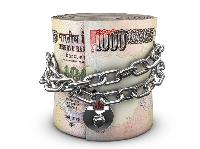
Demonetization is a generations’ memorable experience and is going to be one of the economic events of our time. Its impact is felt by every Indian citizen. Demonetization affects the economy through the liquidity side. Its effect will be a telling one because nearly 86% of currency value in circulation was withdrawn without replacing bulk of it. As a result of the withdrawal of Rs 500 and Rs 1000 notes, there occurred huge gap in the currency composition as after Rs 100; Rs 2000 is the only denomination.
Absence of intermediate denominations like Rs 500 and Rs 1000 will reduce the utility of Rs 2000. Effectively, this will make Rs 2000 less useful as a transaction currency though it can be a store value denomination.
Demonetization technically is a liquidity shock; a sudden stop in terms of currency availability. It creates a situation where lack of currencies jams consumption, investment, production, employment etc. In this context, the exercise may produce following short term/long term/, consumption/investment, welfare/growth impacts on Indian economy. The intensity of demonetization effects clearly depends upon the duration of the liquidity shocks. Following are the main impacts.
- Demonetization is not a big disaster like global banking sector crisis of 2007; but at the same time, it will act as a liquidity shock that disturbs economic activities.
- Liquidity crunch (short term effect): liquidity shock means people are not able to get sufficient volume of popular denomination especially Rs 500. This currency unit is the favourable denomination in daily life. It constituted to nearly 49% of the previous currency supply in terms of value. Higher the time required to resupply Rs 500 notes, higher will be the duration of the liquidity crunch. Current reports indicate that all security printing press can print only 2000 million units of RS 500 notes by the end of this year. Nearly 16000 mn Rs 500 notes were in circulation as on end March 2016. Some portion of this were filled by the new Rs 2000 notes. Towards end of March approximately 10000 mn units will be printed and replaced. All these indicate that currency crunch will be in our economy for the next four months.
- Welfare loss for the currency using population: Most active segments of the population who constitute the ‘base of the pyramid’ uses currency to meet their transactions. The daily wage earners, other labourers, small traders etc. who reside out of the formal economy uses cash frequently. These sections will lose income in the absence of liquid cash. Cash stringency will compel firms to reduce labour cost and thus reduces income to the poor working class.
There will be a trickle up effect of the liquidity chaos to the higher income people with time.
4. Consumption will be hit: When liquidity shortage strikes, it is consumption that is going to be adversely affected first.
Consumption ↓→ Production ↓→ Employment ↓→ Growth ↓→ Tax revenue ↓
5. Loss of Growth momentum– India risks its position of being the fastest growing largest economy: reduced consumption, income, investment etc. may reduce India’s GDP growth as the liquidity impact itself may last three -four months.
6. Impact on bank deposits and interest rate: Deposit in the short term may rise, but in the long term, its effect will come down. The savings with the banks are actually liquid cash people stored. It is difficult to assume that such ready cash once stored in their hands will be put into savings for a long term. They saved this money into banks just to convert the old notes into new notes. These are not voluntary savings aimed to get interest. It will be converted into active liquidity by the savers when full-fledged new currency supply take place. This means that new savings with banks is only transitory or short-term deposit. It may be encashed by the savers at the appropriate time. It is not necessary that demonetization will produce big savings in the banking system in the medium term. Most of the savings are obtained by biggie public sector banks like the SBI. They may reduce interest rate in the short/medium term. But they can’t follow it in the long term.
7. Impact on black money: Only a small portion of black money is actually stored in the form of cash. Usually, black income is kept in the form of physical assets like gold, land, buildings etc. Hence the amount of black money countered by demonetization depend upon the amount of black money held in the form of cash and it will be smaller than expected. But more than anything else, demonetization has a big propaganda effect. People are now much convinced about the need to fight black income. such a nationwide awareness and urge will encourage government to come out with even strong measures.
8. Impact on counterfeit currency: the real impact will be on counterfeit/fake currency as its circulation will be checked after this exercise.
Demonetization as a cleaning exercise may produce several good things in the economy. At the same time, it creates unavoidable income and welfare losses to the poor sections of the society who gets income based on their daily work and those who doesn’t have the digital transaction culture. Overall economic activies will be dampened in the short term. But the unmeasurable benefits of having more transparency and reduced volume of black money activities can be pointed as long term benefits.
*********









